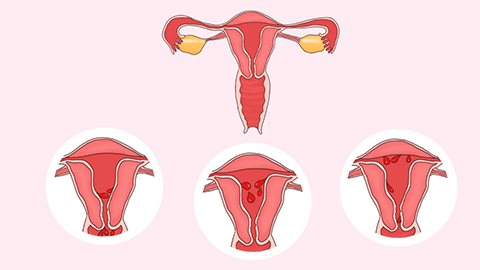How much does a uterine polyp surgery cost?
Generally, the principle of uterine polyps surgery involves removing abnormally proliferated polypoid tissue within the uterine cavity through medical instruments to relieve symptoms such as bleeding and abdominal pain, and to prevent the risk of malignancy. The general reference price for uterine polyps surgery ranges from 2000 to 8000 yuan per procedure. Most patients experience significant recovery within one to two weeks; however, specific pricing is influenced by factors such as the size of the polyps, the type of surgical procedure, preoperative examination items, postoperative recovery needs, and local medical market supply and demand. This procedure should be performed at a qualified hospital. Detailed analysis is as follows:
1. Size of the Polyps
Differences in polyp size result in varying surgical difficulty and time required, thereby affecting the reference price. Generally, small polyps less than 1 cm in diameter require relatively simple procedures, with a reference price ranging from 2000 to 4000 yuan per procedure. In contrast, larger polyps exceeding 2 cm in diameter require more delicate techniques and longer operation times, with the reference price rising to between 5000 and 8000 yuan per procedure.
2. Type of Surgery
Equipment costs and procedural steps vary among different surgical types, which affects the reference price. Hysteroscopic minimally invasive surgery, due to its sophisticated equipment and minimal trauma, has a reference price ranging from 4000 to 8000 yuan per procedure. Traditional curettage, being relatively simple with lower equipment costs, has a lower reference price ranging from 2000 to 4000 yuan per procedure.

3. Preoperative Examination Items
The number of preoperative examination items directly affects the overall cost. If only basic tests such as complete blood count and gynecological ultrasound are required, the reference price may range from 2000 to 3000 yuan per procedure. However, if additional tests such as coagulation function and infectious disease screening are needed due to the patient's physical condition, the reference price may increase to between 3000 and 5000 yuan per procedure.
4. Postoperative Recovery Needs
Different postoperative recovery requirements lead to price differences. For basic postoperative care, such as routine anti-inflammatory treatment and simple wound dressing changes, the reference price may range from 2000 to 4000 yuan per procedure. If the patient develops mild postoperative infection or slow recovery, requiring additional anti-infective treatment and rehabilitation monitoring, the reference price may rise to between 4000 and 7000 yuan per procedure.
5. Local Medical Market Supply and Demand
Local medical market supply and demand influence surgical pricing. In areas with strained medical resources and high demand, such as densely populated big cities, the reference price is usually higher, ranging from 4000 to 8000 yuan per procedure. In contrast, in regions with sufficient medical resources and relatively lower demand, the reference price may be more affordable, ranging from 2000 to 5000 yuan per procedure.
In daily life, after surgery, it is important to maintain external genital cleanliness and dryness, avoid tub bathing and sexual intercourse until given medical clearance, take anti-inflammatory medications as prescribed to prevent infection, and maintain a light and easily digestible diet while avoiding spicy and irritating foods. Additionally, monitor vaginal bleeding closely; if bleeding increases or abdominal pain worsens, seek medical attention promptly.




